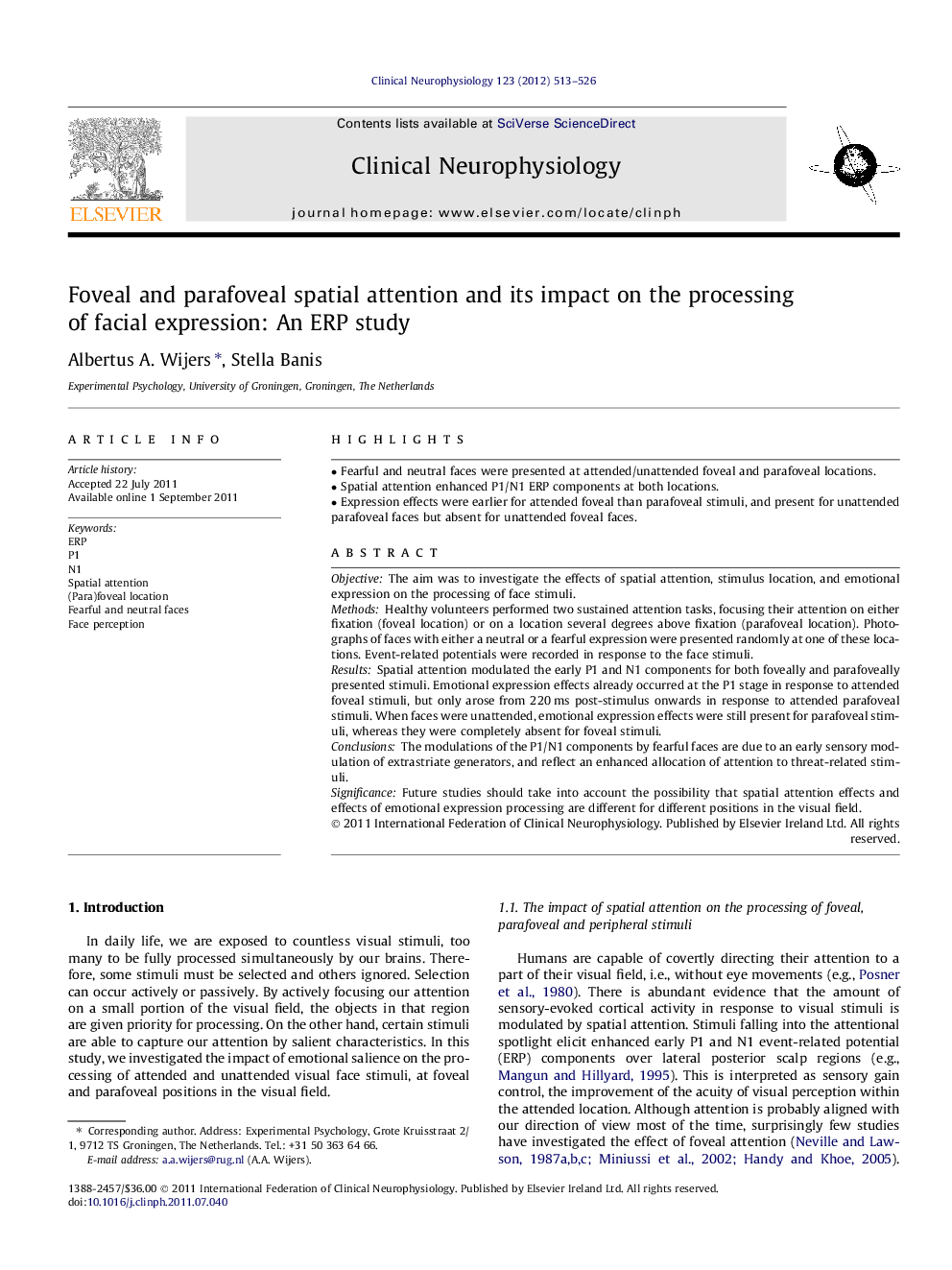| Article ID | Journal | Published Year | Pages | File Type |
|---|---|---|---|---|
| 3045440 | Clinical Neurophysiology | 2012 | 14 Pages |
ObjectiveThe aim was to investigate the effects of spatial attention, stimulus location, and emotional expression on the processing of face stimuli.MethodsHealthy volunteers performed two sustained attention tasks, focusing their attention on either fixation (foveal location) or on a location several degrees above fixation (parafoveal location). Photographs of faces with either a neutral or a fearful expression were presented randomly at one of these locations. Event-related potentials were recorded in response to the face stimuli.ResultsSpatial attention modulated the early P1 and N1 components for both foveally and parafoveally presented stimuli. Emotional expression effects already occurred at the P1 stage in response to attended foveal stimuli, but only arose from 220 ms post-stimulus onwards in response to attended parafoveal stimuli. When faces were unattended, emotional expression effects were still present for parafoveal stimuli, whereas they were completely absent for foveal stimuli.ConclusionsThe modulations of the P1/N1 components by fearful faces are due to an early sensory modulation of extrastriate generators, and reflect an enhanced allocation of attention to threat-related stimuli.SignificanceFuture studies should take into account the possibility that spatial attention effects and effects of emotional expression processing are different for different positions in the visual field.
► Fearful and neutral faces were presented at attended/unattended foveal and parafoveal locations. ► Spatial attention enhanced P1/N1 ERP components at both locations. ► Expression effects were earlier for attended foveal than parafoveal stimuli, and present for unattended parafoveal faces but absent for unattended foveal faces.
